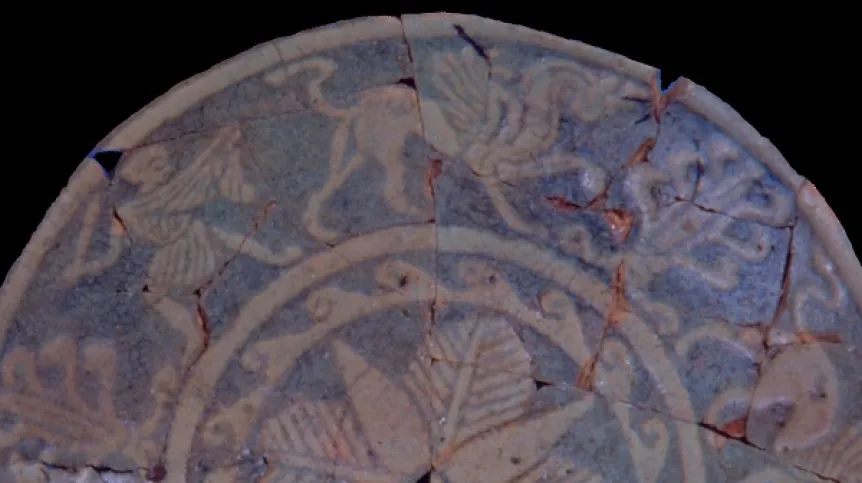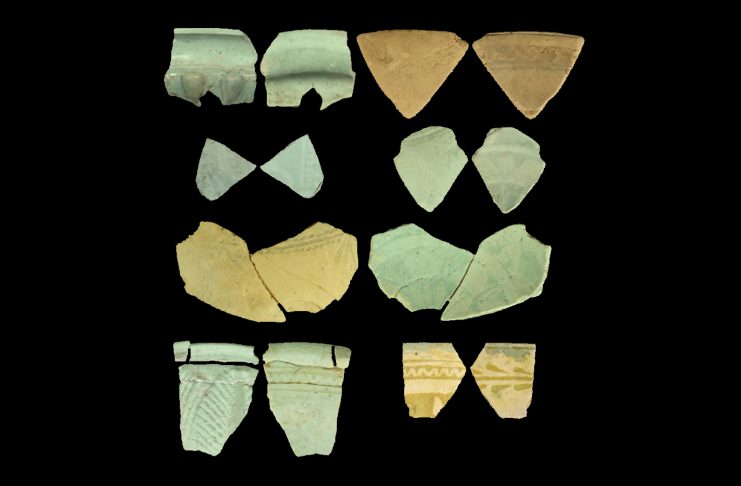Recent findings have illuminated the complex methods behind the creation of ancient Egyptian faience, revealing an unexpected link to gold mining. Polish archaeologists have discovered that the powdered quartz utilized in crafting faience vessels in the ancient city of Athribis, situated in Egypt’s Nile Delta, was derived from leftover tailings from gold mining operations. This article delves into the importance of this revelation, highlighting the research and discoveries made by scientists from the University of Warsaw and Cardinal Stefan Wyszynski University.
The Ancient City of Athribis
Known in antiquity as Athribis, Tell Atrib was a significant political center within the Nile Delta. Located northeast of Benha on the hill of Kom Sidi Yusuf, Athribis thrived as a major site of activity in Lower Egypt. Excavations conducted from 1985 to 1995 by a Polish-Egyptian archaeological team uncovered remnants of baths, craft workshops, and an ancient villa, yielding essential insights into the city’s history.
Discovery of Kilns and Faience Production

Among the various findings, the kilns discovered at the site particularly piqued the interest of researchers. Initially, it was believed these kilns were used for firing faience vessels, which were also found during the digs. Egyptian faience, a type of sintered-quartz ceramic known for its vibrant blue and green glazes and intricate designs, was confirmed through a research project funded by the National Science Centre and led by engineering geologist Magorzata Zaremba. The study established that these kilns could fire faience vessels at temperatures between 1,050 and 1,150 degrees Celsius.
Chemical Analysis of Faience Bowls
The team examined the chemical makeup of seven fragments of 2,000-year-old bowls adorned with blue glaze. These bowls featured convex and concave motifs characteristic of Egyptian, Greek, and Oriental art, displaying a range of geometric and floral patterns as well as figural scenes. The analysis indicated that the faience items were composed of roughly 90% powdered quartz, 4% a mixture of burnt lime and bone meal, 2% river fluvisol, 2% gelatin, 1% feldspar flour, and 1% lead sulfide. Each ingredient played a vital role in the firing process; for instance, gelatin contributed plasticity to the mixture.

Sourcing Quartz from Gold Mining Heaps
One of the most noteworthy findings was that the high-quality quartz powder used in faience production originated from gold-bearing veins in Egypt’s Eastern Desert. These quartz deposits were remnants from gold mining activities located 500-600 km from Tell Atrib, positioned between the Red Sea and the Nile Valley. This discovery underscores the extensive trade routes and resource acquisition practices employed by ancient Egyptians to secure materials for their crafts.
Implications and Future Research

Magorzata Zaremba emphasized that this thorough analysis of faience items, particularly their cores, was unprecedented and highlighted a lack of comparable data. Nonetheless, the methodologies developed and results obtained from this study may inspire further interdisciplinary research on faience artifacts from different historical periods. The widespread appeal of faience objects throughout ancient Egyptian history is evident in the numerous blue and green figurines, pendants, and amulets discovered, including the iconic ankh symbol.
Historical Context and Continued Influence

The oldest faience artifacts in Egypt date back over 4,500 years to the era of the first pyramid builders. The technique reached its zenith during the middle of the second millennium BCE, particularly under the reigns of Hatshepsut and Ramesses the Great. Despite advancements in modern science, the precise recipes and production techniques for ancient Egyptian faience remain elusive. Today, souvenirs resembling faience products are available at tourist attractions such as the Giza pyramids and Luxor Temple, perpetuating the legacy of this ancient craft.
Conclusion

The revelation that ancient Egyptian faience production was connected to gold mining tailings offers a captivating look into the resourcefulness and creativity of ancient artisans. The research conducted by Polish archaeologists not only enhances our understanding of the materials and techniques employed but also emphasizes the interconnectedness of ancient trade and industry. As further studies expand on these findings, our comprehension of ancient Egyptian craftsmanship and its lasting influence will continue to grow.

